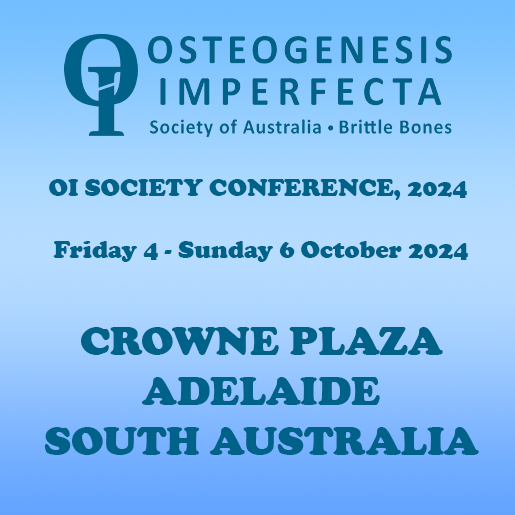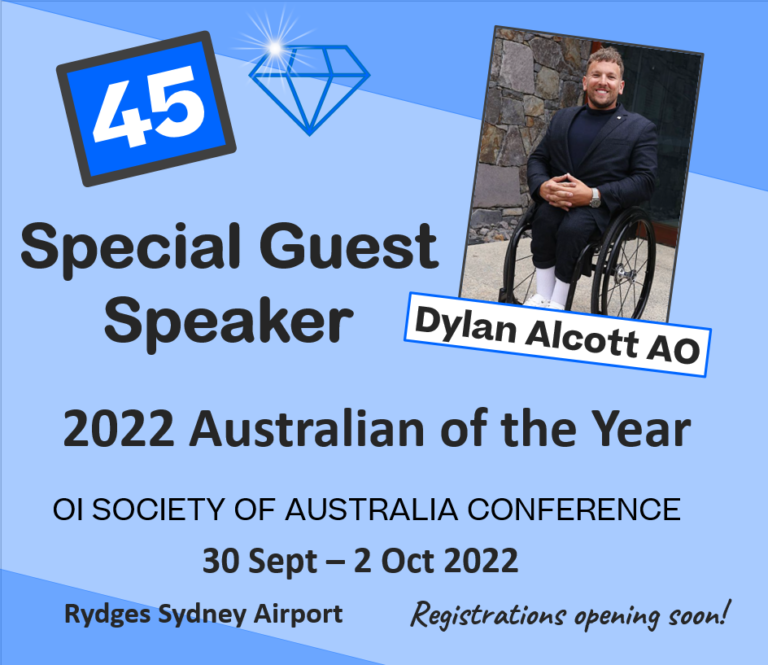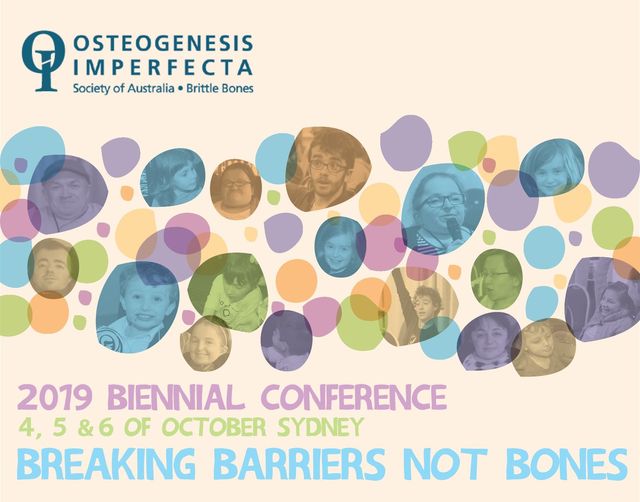Osteogenesis Imperfecta (OI) means “bones formed imperfectly”. These are genetic conditions that someone is born with, and will throughout their life. They primarily affect the bones, causing them to be fragile. We currently recognize over 20 distinct genetic causes. There are a similar number of genetically determined related forms of Familial Osteoporosis.
Osteogenesis Imperfecta (OI) is the Latin term for a large group of rare disorders with imperfect development (genesis) of bones (Osteo-). The conditions are inborn and the tendency to bone fragility persists throughout life. As well as an intrinsic tendency to fracture bones more easily (brittle bones) people with OI may develop osteoporosis, which contributes further to bone bowing, and sometimes deformities of long bones and spine. It is estimated that roughly 7 people per 100 000 are born with OI.
OI may also result in blue tinted sclerae (the white of the eyes), short stature, hearing loss, brittle teeth with opalescent discolouration (Dentinogenesis Imperfecta), muscle weakness, joint hypermobility and restricted breathing.
There are currently 5 clinical groups known as Types of OI (each with many sub-types) that vary in the level of fragility and other properties. The International Committee for naming OI disorders recommended in 2023 that health professionals and people with OI use a dual (Dyadic) named diagnosis. Over 20 genetic causes of OI have been identified and there are over 20 other bone fragility disorders which can be hard to distinguish from OI. People with OI are all unique! No two people display exactly the same characteristics of OI, even within the established Types.
The commonest form of OI in many populations is known as Type 1, which is characterized by distinctly blue sclerae (whites of the eyes) and autosomal dominant inheritance. It is often associated with adult hearing loss, but rarely with deformity of long bones or spine. Another common form with lifelong bone fragility but normal sclerae is known as Common Variable OI Type 4 and can often go undiagnosed until later in life. Type 3 OI includes many genetic variants with early fractures and a tendency to bowing of long bone and short stature. People with Type 5 OI have a dominantly inherited, very variable form of OI which results in bone forming between the bones of the forearm causing elbow dislocation.
Children born with more severe Types of OI can often sustain fractures in the womb or during childbirth. The most severe cases of OI can result in infant death, often due to respiratory failure during or shortly after birth and are grouped as OI Type 2.
There are numerous subtypes and these need to be distinguished from special syndromes with Osteoporosis (e.g. Bruck syndromes of Osteoporosis with Joint Contractures or Cole-Carpenter syndromes with premature closure of cranial sutures (craniosynostosis).


